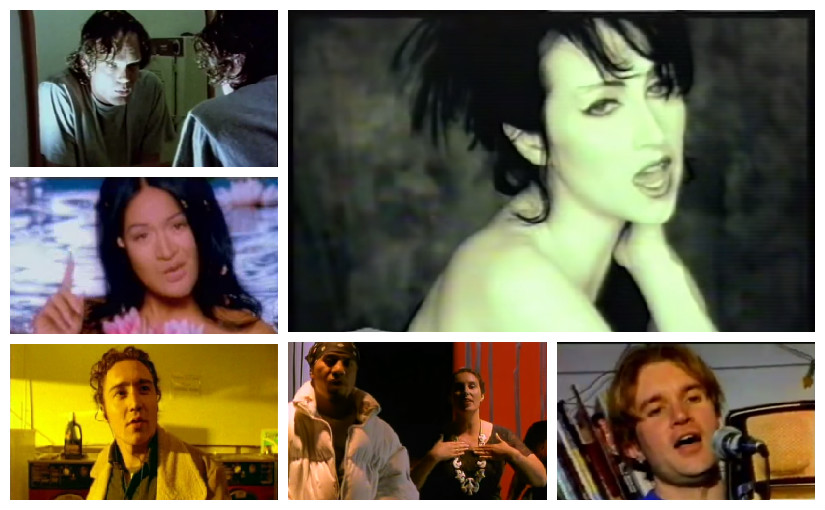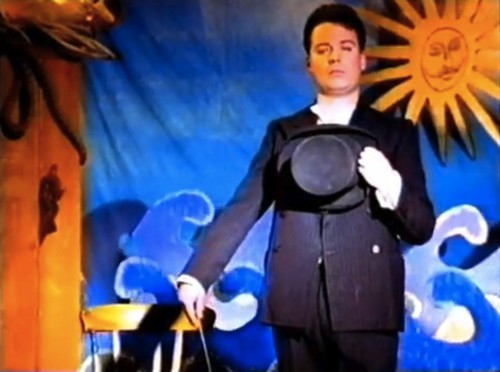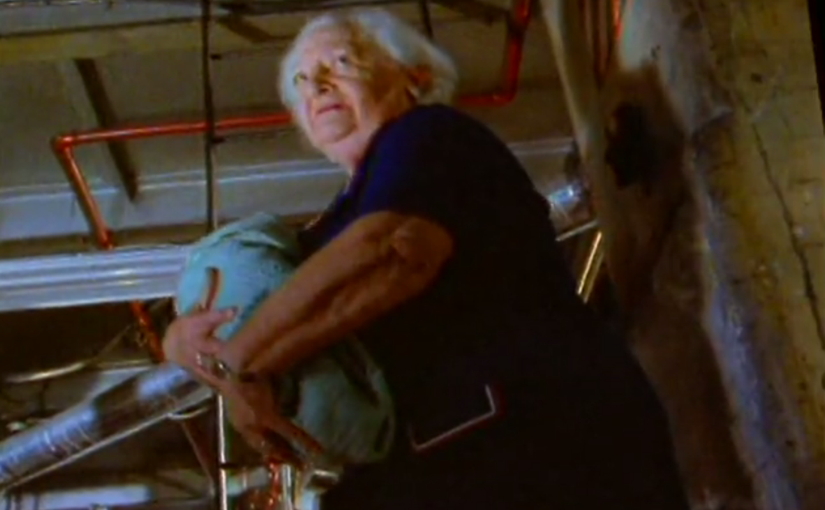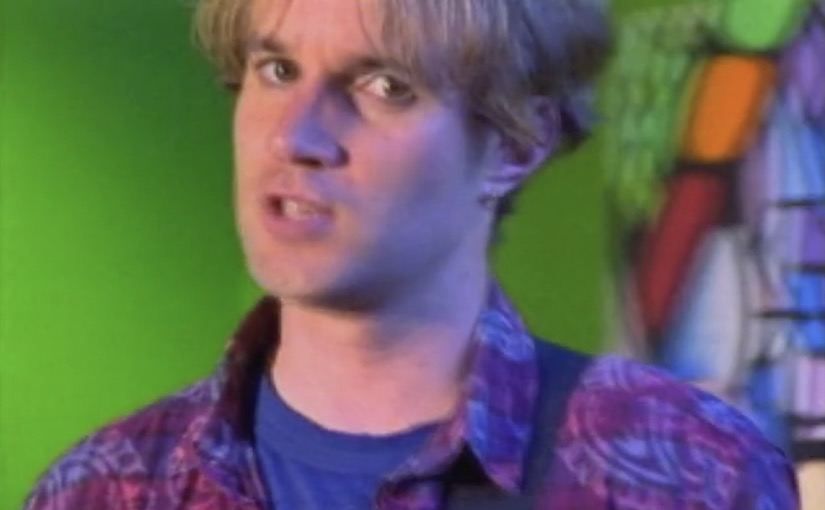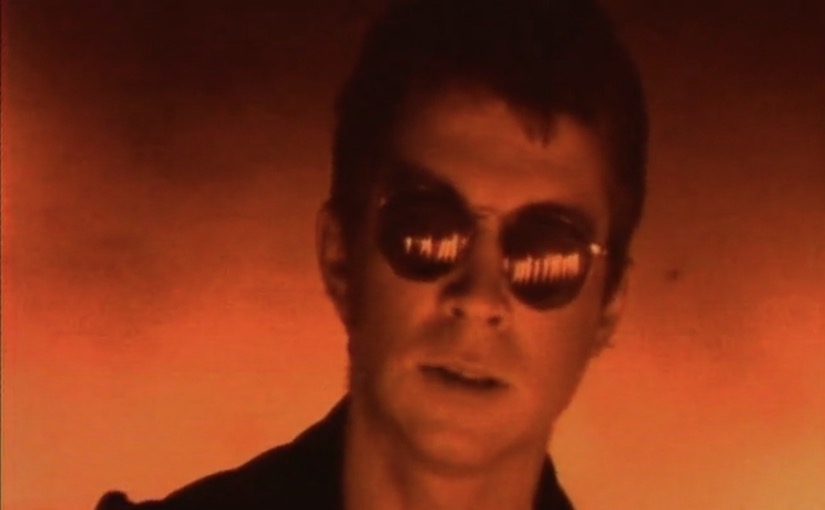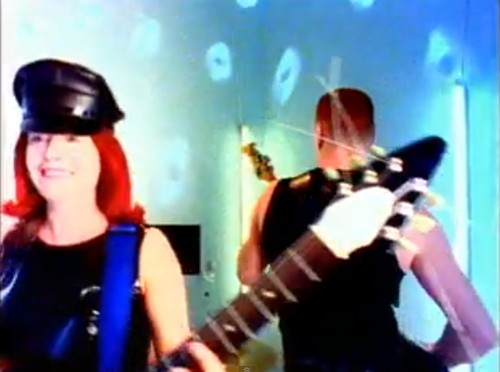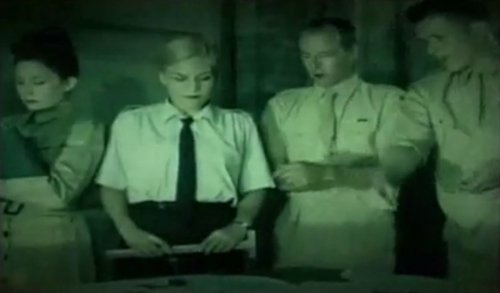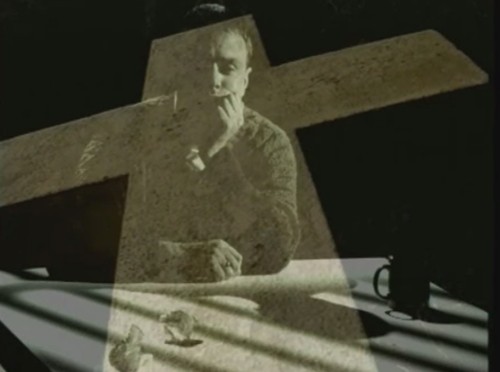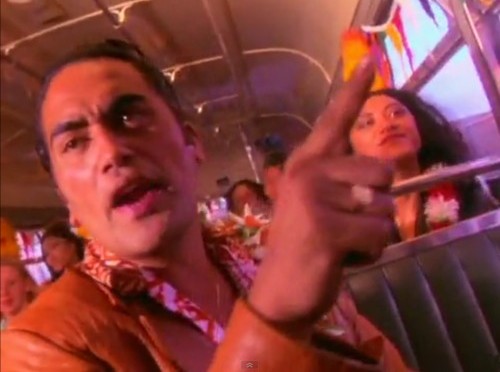Loads of found videos from 1996, featuring cameo appearances from three bright young actors, Stella as a grunge band, double Annie Crummer and Strawpeople, and some political pop.
Category: February 1996
Martin Phillipps and the Chills “Surrounded”
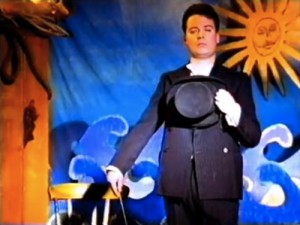 By 1996 the Chills were known as Martin Phillipps and the Chills, but like other videos from this time, the latest incarnation of the Chills are absent, with Martin Phillipps the only star of the video.
By 1996 the Chills were known as Martin Phillipps and the Chills, but like other videos from this time, the latest incarnation of the Chills are absent, with Martin Phillipps the only star of the video.
The song has a quirky, upbeat tone with dark lyrics (bloody goths) and the video picks up on this. It starts with stage show, where Martin plays “the great Persevero”. I assume he is skilled at persevering.
He’s up on stage with some cardboard waves moving from side to side, and a cardboard sun, reminiscent of the “Sunburnt” album cover. We also see Martin in more regular guise, strumming along on his guitar, sitting amongst a pile of highly symbolic crushed cars.
There’s more fun to be had on stage, at Persevero tries hard to perform his magic tricks, only to set fire to the chain of handkerchiefs. The stage also features the only appearance of another person, whose sole purpose seems to be to comedically swing a ladder around to bump Persevero over.
Compared to the slicker efforts of previous Chills videos, “Surrounded” is obviously a much lower budget number, but it captures the dark humour at the heart of the song.
Best bit: the junkyard dog, not at all interested in the pop goings-on.
Next… a three-way.
Missing videos from 1996
February 1996
Dei Hamo “International Whirl Rocker”
After making his mark doing the guest rap on Nathan Haines’ “Lady J”, Dei Hamo went solo with International Whirl Rocker (or “Rocca”, as it is listed in the NZOA database. The song was due to be released on Papa Pacific Records, but the label folded before this could happen, with Phil Fuemana eventually including the track on the groundbreaking Pioneers of a Pacifikian Frontier album. Here’s Dei Hamo performing the song live on Mai Time.
Teina Benioni “Gone Fishing”
Teina was nicknamed “the bard of Otara”. He played all the instruments and sang all the vocals on his song “Gone Fishing”.
April 1996
Eye TV “Immaculate”
Another track from Eye TV. “Immaculate” was a return to a more electric sound for the group. Nga Taonga describe the video as, “Eye TV perform “Immaculate” in white room under flashing lights.”
Director: Sharron Ward
Ngā Taonga Sound & Vision
Moana and the Moahunters “Prophecies”
“Prophecies” was a track on Moana and the Moahunter’s second album, Tahi. It’s a gentle soul ballad, and Moana’s website says it touches “on more spiritual matters”. This looks like a case where the video was never made.
Splitter “What You Know”
Splitter had “What You Know”, described by the Herald as “XTC-meets-powerpop”. Nga Taonga describe the video as, “The Splitter singer sings “What You Know” strapped to a chair in an interrogation room.”
Director: Jonathan King
Ngā Taonga Sound & Vision
June 1996
Bike “Old & Blue”
Bike’s first single, “Save My Life”, is afforded digital immortality due to its inclusion on the Flying Nun “Very Short Films” compilation, but second single “Old and Blue” isn’t so lucky.
Director: Mark Tierney
Ngā Taonga Sound & Vision
Dam Native “Top Notch Vocalist”
The only mention of the Dam Native song “Top Notch Vocalist” is in the NZOA funding list. It seems like the sort of funding that might have ended up going to a different song.
Future Stupid “Greed”
Christchurch band Future Stupid were causing a ruckus with “Greed”. While the music video isn’t online, you can take your pick of 1997 live performances at the Summer Series, the Big Day Out or a DIY music video.
Lodger “Tell Me Have You Ever Seen Me”
Another song from Lodger, aka Damon from Dead Flowers’ side project. I assume that “Tell Me Have You Ever Seen Me” is a cover of the Small Faces song.
Second Child “Prove You Wrong”
“Prove You Wrong” is the sixth funded video from Second Child.
Director: Jonathan King
Ngā Taonga Sound & Vision
Splitter “Tremolo Panned”
Splitter was an Andrew Thorne project and “Tremolo Panned” was a nice piece of mid-’90s rock. But best of all, the Kiwi Hit List noted that the song features “Graham Brazier on electrified harmonica”.
The Exponents “Do You Feel In Love”
The Exponents said farewell to Warner Music with a final single, “Do You Feel In Love”. Nga Taonga’s description suggests the video is a classic style Greg Page animation: “A claymation Exponents perform “Do You Feel In Love”.”
Director: Greg Page
Ngā Taonga Sound & Vision
August 1996
Breathe “Smiley Hands”
Breathe debuted with “Smiley Hands”, giving just an inkling of the major label excitement they stirred only a few years later. The olden internet has revealed this short but amazing article about the Smiley Hands EP. Taken from a December 1996 issue of RipItUp, it’s the kind of music writing that’s so scarce in this digital age.
Igelese “Emotions”
“Emotions” was Igelese’s second funded video. There’s no sign of it ever having been made, which might be tied to the end of Igelese’s record label, Papa Pacific. But he went on to compose music for Lord of the Rings and Moana, so it turned out well.
Lole “Feel Like Making Love”
Lole covers “Feel Like Making Love”, that’s the safe Roberta Flack song, not Bad Company’s rock classic.
Director: Marc Swadel
Ngā Taonga Sound & Vision
Peaches “Go”
OMG, Peaches?! Wait, it’s not the Canadian performance artist, but a Debbie Harwood project. She got her musician mates to cover classic New Zealand pop. “Go” is project’s one original track, penned by Rikki Morris.
Seven a Side “Running Back to You”
Also from the Rockquest is Seven a Side, winner of the Tangata Pasifica Beats category. A funded video for “Running Back To You” was part of the prize package. The track also featured on Tangata Records’ compilation album Tribal Stomp II.
Supergroove “5th Wheel”
“5th Wheel” is an attempt at a sweet pop song, complete with flute, strings, and ah-ah-ahs. I believe vocals are by Joe Lonie, and the video involved him sitting on the back of a ute.
The 3Ds “Vector 27”
“Vector 27” was from The 3Ds final album, Strange News from the Angels. It was also the final 3Ds video to be funded. Nga Taonga enticingly describes the video as, “The 3Ds go for a drive in the countryside and encounter flying saucers and aliens.”
October 1996
Ardijah “Oh Baby”
After returning from five years in Australia, “Oh Baby” was Ardijah’s new single. The video isn’t online, but here’s a short clip of a live performance from the era. Nga Taonga describe the video as “Ardijah perform “Oh Baby” in cabaret setting.”
Bobby Owen “Falling”
The Kiwi Hit Disc described 18-year-old Bobby Owen’s single “Falling” as a “moody soulful ballad” that was recorded at Fuemana Studios.
Dam Native “Extremities”
Another cool track from Dam Native. “Extremities” was produced by Zane Lowe.
Greg Johnson “Softly On Me”
“Softly On Me” featured Boh Runga and was produced by Dave Dobbyn. Jonathan King directed the video, filmed at a Tongan church in Auckland.
Director: Jonathan King
Ngā Taonga Sound & Vision
Mary “Golden Halo”
Mary was an all-girl band, and they were a very all-girl band. Check out this profile in the Herald – about half the article is about aspects of their all-girl-bandliness. Their sweet, girly song “Golden Halo” was the first of many funded videos. I’ve heard from a performer in the video who says she wore a halo, naturally enough.
Stellar “Real”
It’s cool seeing signs of Stellar’s early work, putting in the hard yards before they were snapped up by Sony and became pop icons. “Real” was another early single.
December 1996
Ardijah “Bad Buzz”
More Polyfonk from Ardijah, this time with “Bad Buzz”, a Bob Marley tribute. Nga Taonga describes the video as “Ardijah sing “Bad Buzz” walking through sideshows / amusement park.”
Director: Neil Cervin
Ngā Taonga Sound & Vision
Brothers & Sisters “Parihaka”
Like both Tim Finn and Jacqui Keelan Davey, the young Maori band Brothers & Sisters pay tribute to the pacifist Te Whiti with their song “Parihaka”. The track featured on the Tangata Records compilation album Tribal Stomp II.
DLT “Black Panthers”
The instrumental “Black Panthers” was the second single off DLT’s album “The True School”.
Fat Mannequin “That Matters”
Fat Mannequin deliver “That Matters”, a very ’90s rock ballad.
In The Whare “Sister Dread”
According to NZOA, In The Whare’s music was a mix of reggae, hip hop, funk and metal. Their song “Sister Dread” also featured on Tribal Stomp II.
Matty J Ruys feat Lole “Love Every Little Thing”
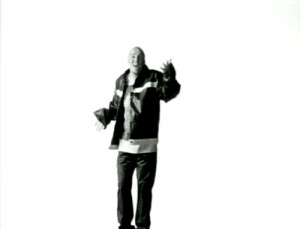 “Love Every Little Thing” is Matty J doing what he does best – smooth R&B pop. Christian soul diva Lole joins Matty J on their cover of this Stevie Wonder album track.
“Love Every Little Thing” is Matty J doing what he does best – smooth R&B pop. Christian soul diva Lole joins Matty J on their cover of this Stevie Wonder album track.
The video is shot in black and white, with Matty and Lole sing the song in front of a stark white background. Their footage is cut together with clips of a diverse selection of other couples, but also a body builder wearing only underpants. Also, a ladder makes a brief cameo.
There’s a slight religious component to the song. Matty J clarifies that while he really loves the subject of the song, “there is only one that I place above you – it’s God that I place above you.” Mainstream New Zealand pop songs don’t normally go to that Jesus place – and Stevie Wonder didn’t even release this song as a single. It’s refreshing to get a slice of a New Zealand gospel style.
It’s a really cute song, but the video seems a little bit too serious. Most of the diverse couples look very serious, like there’s a bit of unhappiness in their relationships. And I’m still trying to figure out the ladder. Perhaps it’s the happiest of all.
Best bit: the ladder, it will take you to higher ground.
Next… the overground singing girl.
Garageland “Fingerpops”
The “Fingerpops” video is an ode to drinking, specifically to that kind of drinking people do in their early 20s. It’s when you’ve moved on from such adolescent delights as peach schnapps and Sprite, and are now entering the adult world of sophisticated drinks. Why, in this video Garageland are hanging out in a Tarantinoesque bar, enjoying a whisky-like beverage in cut-glass tumblers, and drinking some sort of milky concoction shaken up and poured into shot glasses, and there are cocktail umbrellas. Take that, Don Draper.
“Fingerpops” is a love song, about being carried away with the whirlwind of emotion that comes with love, about how the cracking of knuckles can set your heart ablaze just cos it’s your special sweetie who’s doing it.
As well as the drinking, the video captures both the moody, emotional side of the love (the dark bar) and the joyful fun side (a bright lounge decorated with op shop furniture). It’s that perfect naivety of being a young adult – caught between the bright shiny world of childhood but forcing yourself into the dark world of adulthood.
Maybe this is how I want to remember the ’90s. I look to Jeremy Eade, wearing the sort of shirt you only see these days on cool uncles. “I haven’t been to bed for days,” brags Jeremy. “I live in a twilight haze.” When you’re old, this is a terrible situation. When you’re young, it’s brilliant.
Best bit: As the rest of the band rocks out, Debbie Silvey plays her guitar while lying on the couch.
Director: Peter Bell, Carla Rotondo
Ngā Taonga Sound & Vision
Next… a boy, a girl, a ladder.
Bike “Save My Life”
Ok, first a disclosure: I really don’t like this song, I generally don’t like the music of Bike, and I was not a fan of Andrew Brough’s songwriting in the Straitjacket Fits. But I know many people who love his songs, including “Save My Life”, so I’m willing to put my personal feelings aside. This is very generous of me.
Directed by Mark Tierney, the video is based around the band playing the song in a simple studio. They’re all dressed in black, all wearing dark glasses, and the black-and-white footage is tinted orange. The video is slowed down, which gives it a dreamy feeling and works with the tone of the song.
The band’s sunglasses are a little reminiscent of the diabolical Boss Godfrey in “Cool Hand Luke”, and we frequently see fiery flames reflected in Andrew’s glasses. So when he sings “I’m already dead”, we can assume this means he’s in hell. Oh crap.
Occasionally we catch a glimpse of the outside world – a wave crashes on a beach, a photograph flutters in the wind in a city street. These images are shot in untinted black and white. Is this heaven?
As the video progresses, the orange-filtered footage of the band alternates with straight black and white. Even though they are “already dead”, perhaps it is still possible for their souls to be saved. Whoa.
Best bit: the flames, the fiery flames of hell.
Director: Mark Tierney
Ngā Taonga Sound & Vision
Next… open up the bar.
Superette “Touch Me”
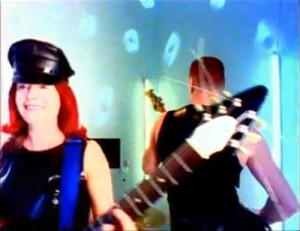 ouch”Touch Me” is a song about Mark David Chapman and his obsessive relationship with John Lennon, the second Superette song to give a pop treatment to a bad man.
ouch”Touch Me” is a song about Mark David Chapman and his obsessive relationship with John Lennon, the second Superette song to give a pop treatment to a bad man.
But instead of making the film about a deranged killer, director Stuart Page picks up on the “touch me” refrain of the chorus and turns it in a more sexy but still unsettling direction.
Set in a K Road peep show booth, a leather-clad Superette squeeze on to the rotating stage in the booth, where they perform their sexy indie pop routine to a number of customers.
There’s a very excited fellow who’s brought along a catering-size jar of Vaseline, which he proceeds to smear all over his face and hair. At first he’s startled by what he finds on the other side of the window (not Madonna in the “Open Your Heart” video), but he soon comes to appreciate the trio.
We also meet a balding man who views a bored transvestite, a businesswoman who views two female boxers, and a floppy haired man who breaks open the window and finds Mr Vaseline rotating on the stage. Is this a magical peep booth that shows people what their heart truly desires?
While the song has some pretty dark themes, the “Touch Me” video cleverly keeps the dark undertones but uses enough humour to match the poppy feeling of the song. And any band who can enthusiastically wear S&M leathers while performing in a small space has my admiration.
Best bit: Mr Vaseline’s sex face. He likes what he sees.
Director: Stuart Page
Ngā Taonga Sound & Vision
Next… life after death.
Semi Lemon Kola “Play Dumb”
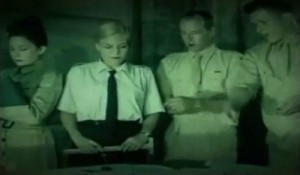 Semi Lemon Kola always had a bit of a Red Hot Chili Peppers sound, and indeed it’s there even when they’re tackling a ballad. “Play Dumb” has that same serious Anthony Keidis ballad voice happening, complete with compressed vocals.
Semi Lemon Kola always had a bit of a Red Hot Chili Peppers sound, and indeed it’s there even when they’re tackling a ballad. “Play Dumb” has that same serious Anthony Keidis ballad voice happening, complete with compressed vocals.
The video attempts a World War II theme, but it’s not quite an authentic period drama. In this World War II, glamorous women are also high-ranking military officials.
A non-military glamorous woman puts a record on the stereogram for a couple of officers, while up in the sky some aerial combat takes place. Any attempt at realism is dropped with the use of wobbly models for the aerial shots.
After a terrible crash, a soldier gets some badly applied bandages on his face, reminiscent of Metallica’s “One” video, only not as haunting.
But who is the enemy these brave soliders are fighting? Perhaps there is a clue in the lyrics – “I’m my own worst enemy. The only one I blame is myself.” Oh, it’s not Nazis they’re fighting; it’s the super-ego!
The video ends in more aerial combat, cuminating with a cheerful pilot who appears to drop a nuclear bomb on the Beehive. It’s not entirely clear why he does this, though it’s probably something to do with the government getting everyone down.
I dunno. New rule for music video production: stay away from the army surplus store.
Best bit: the glamourous lady plays the “Oceana Roll” record, a song that predates World War I. Get with it, grandma.
Director: Steve Morrison
Ngā Taonga Sound & Vision
Next… a giant jar of Vaseline and a view.
Rikki Morris “These Dark Moods”
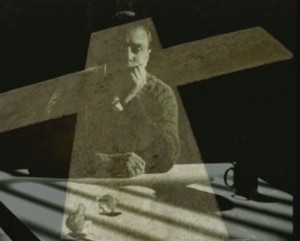 Even before I watched this video, I was intrigued by this comment on YouTube. “Warners hated this video. I’m not sure it ever actually went to air.” Well, it would have gone to air at least once to fulfill the NZOA funding obligations, but was it really as uncommercial as that comment seemed to suggest?
Even before I watched this video, I was intrigued by this comment on YouTube. “Warners hated this video. I’m not sure it ever actually went to air.” Well, it would have gone to air at least once to fulfill the NZOA funding obligations, but was it really as uncommercial as that comment seemed to suggest?
The song itself is intriguing. It’s an upbeat, ’60s-influenced pop rock song – something that Rikki Morris is very good at writing. But the lyrics are about really bad depression. Not just feeling a bit glum, but full-on, paralysingly shit depression.
The video is mostly black and white footage of Rikki in a black space singing the song and playing his guitar. Occasionally there are glimpses of a churchyard, gargoyles and crosses. But the poppy nature of the song means all the gothic imagry isn’t too gloomy.
Occasionally we see some behind-the-scenes shots, glimpses of Rikki and the video crew in a studio. It’s a reminder that what you see in the video is, at least in some respect, showbiz.
No doubt a more commercial video could have been made, but I like this one. And looking back, 15 years later, this video feels a lot less dated than other videos from this era.
Best bit: the black and white graveyard scenes, like a high school photography portfolio.
Next… a glamorous military commander.
OMC “Right On”
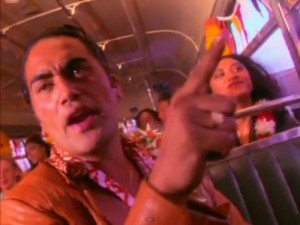 Modern life is tough for Pauly Fuemana. As he plays chess with his glamorous friends in a cool urban cafe, he starts to think back to his carefree childhood in the mystical Island Bay. But it’s not the windy Wellington suburb. Pauly’s Island Bay is a warm sunny seaside spot that filled with the joy of the Pacific Islands.
Modern life is tough for Pauly Fuemana. As he plays chess with his glamorous friends in a cool urban cafe, he starts to think back to his carefree childhood in the mystical Island Bay. But it’s not the windy Wellington suburb. Pauly’s Island Bay is a warm sunny seaside spot that filled with the joy of the Pacific Islands.
Following in the steps of their massive worldwide hit “How Bizarre”, “Right On” doesn’t stray very far from the winning sound of “How Bizarre”. It has the Pacific guitar, ladies singing the chorus, mariachi horns and a handy catchphrase. It’s a fine pop song in its own right, but tends to pale in comparison to “How Bizarre”.
In an attempt to capture the spirit of his childhood, Pauly boards a colourful Elvis-driven bus and gathers up some friends, destination Island Bay. Despite the carefree world of both the lyrics and the video, Pauly looks very serious, as if perhaps there are deep troubles weighing on him. And when he does smile, it looks like he’s trying to hide it, as if looking happy would damage his reputation.
But the video gets a happy ending, with the urbanites reaching Island Bay and enjoying a twilight singalong. And that’s not a bad thing to experience.
Best bit: the important businessman taking an important phone call on his chunky ’90s cellphone.
Director: Rob Mclaughlin
Ngā Taonga Sound & Vision
Next… some very dark moods.
